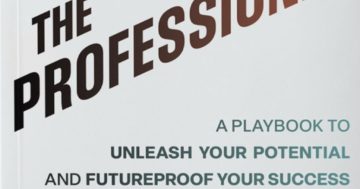Steven G. Rogelberg* says research-based insights can improve your remote meetings and keep participants engaged.
 Poorly run meetings have a tremendously negative impact on team success, innovation, creativity, and on individuals’ wellbeing.
Poorly run meetings have a tremendously negative impact on team success, innovation, creativity, and on individuals’ wellbeing.
In fact, experiencing a poor meeting can even result in meeting recovery syndrome, where employees lose additional time and productivity mentally recovering from a bad meeting.
My research suggests that only around 50 per cent of meeting time is effective, well used, and engaging — and this number drops even lower when it comes to remote meetings.
Running meetings right can result in many positive and energising outcomes, including better decision-making and increased innovation, cohesion, agility, and resilience.
The good news is that there’s an evidence-based path forward based on more than 20 years of research on meetings and teams.
Meeting science has yielded key insights that can be incredibly helpful to meeting leaders.
Adopt a stewardship mindset
The best meeting leaders appear to share a similar mindset: recognising their role as a steward of others’ time.
When you adopt a stewardship mindset, you become deliberate in your meeting decisions from start to finish.
Being intentional and making smart meeting choices do not take much time at all.
These choices span how you set up beforehand, how you manage productivity and presence during the meeting, and how you conclude it.
Set your remote meeting up for success
Don’t over invite: Remote meetings plummet in quality as size increases.
Luckily, remote meetings can be readily recorded and listened to by attendees who don’t attend live.
Let nonessential members off the hook and share the recording so they can listen at their convenience rather than interrupt their flow.
Set time properly: Given our shorter attention spans right now, avoid defaulting to the hour-long meeting.
Don’t hesitate to schedule just 15, 20, or 25 minutes for a meeting.
Reducing the meeting length creates positive pressure; research shows that groups operating under some level of time pressure actually perform more optimally given increased focus and stimulation.
Sharpen the agenda: To create focus, which is often lacking in remote meetings, try organising the agenda as a set of questions to be answered rather than a set of topics to be discussed.
By framing agenda items as questions, you have a better sense of who really has to be invited to the meeting.
Once the questions have been answered, you know when to end the meeting.
Use video: Remote meetings are subject to something called social loafing, a human tendency to reduce effort and motivation when working in a group.
Social loafing increases the more anonymous one feels, akin to hiding in a crowd, and can increase during remote meetings.
Using video, along with inviting as few people as possible, helps counter that sense of anonymity.
Managing productivity and presence during meetings
Start and end on time: Nothing kills momentum like a 15-minute delay because people need to download software, can’t get the video or audio to work, or encounter other technical hiccups.
Meeting presenters should log in five minutes early to ensure that all the technology is working smoothly.
Ending meetings late is a tremendous source of stress for individuals, so don’t run over.
Start the meeting well: As the meeting leader, your mood matters.
It sets the tone.
Research even suggests it may produce a contagion effect on attendees in which their mood mirrors yours.
Start the meeting with energy, appreciation, and gratitude, which increases the chances of a more positive meeting mood state.
Establish norms: How can we expect our remote meetings to be effective if we never talk about what makes for a good one and what we should avoid?
With your attendees, periodically create mutual expectations about what makes for a good remote meeting.
To combat meeting fatigue in longer meetings, it’s helpful to set norms about when folks can take breaks, stand up, and stretch.
Actively facilitate: This is absolutely key in remote meetings.
Meeting leaders must embrace the role of facilitator.
Draw in virtual attendees to keep them engaged.
You might even consider keeping a tally to be sure all are contributing and all voices are heard.
Avoid the generic question, “Any comments?”
Instead, call on people specifically.
Lastly, don’t let people ramble or go off course; kindly interrupting, if necessary, is your job as a meeting leader.
Use tools: Silence does not indicate understanding or agreement.
Some great apps allow participants to vote, an easy way to determine if the group has reached a consensus.
This can be done in real time during the meeting, or immediately afterward to separate deliberation from decision-making.
Utilising the technological tools at your disposal helps increase involvement and engagement.
Ending meetings and gathering feedback
End meetings well: With a few minutes left, be sure to clarify takeaways.
Identify the individual directly responsible for each action item.
Don’t let anyone leave wondering what was accomplished or what the next steps are.
Ask for feedback: Finally, the best way to make your team meetings better is to ask attendees how the meetings are going — the ultimate act of stewardship.
Send out a quick survey where folks share what is going well or not so well, and provide ideas for improvement.
Then learn, reflect, and try some new things based on the feedback.
Is it possible to achieve virtual meeting perfection?
Probably not, but with focused development and intentionality, you can turn your meetings into efficient and engaging events.
While you can’t control others’ meetings, you can make excellent meeting choices and demonstrate stewardship.
You can be the example that you hope others will follow.
Let’s commit to fixing our meetings, one meeting at a time.
* Steven G. Rogelberg is the Chancellor’s Professor at the University of North Carolina, Charlotte. His website is www.stevenrogelberg.com/.
This article first appeared at sloanreview.mit.edu.











